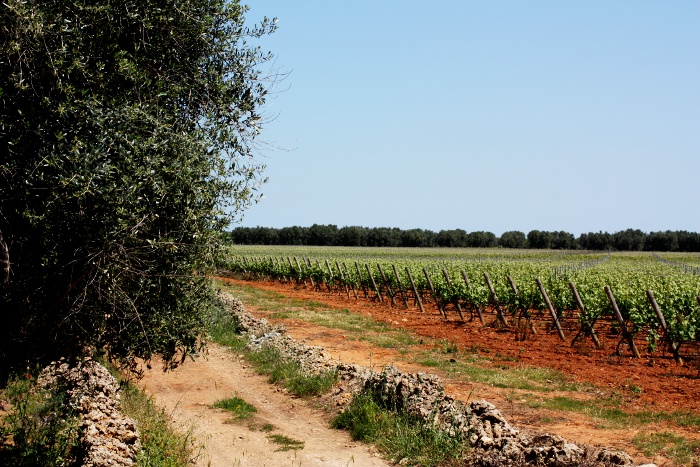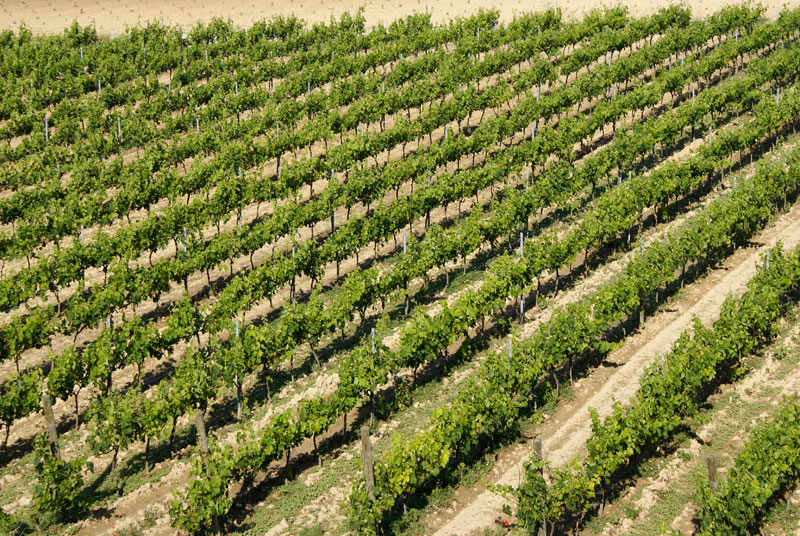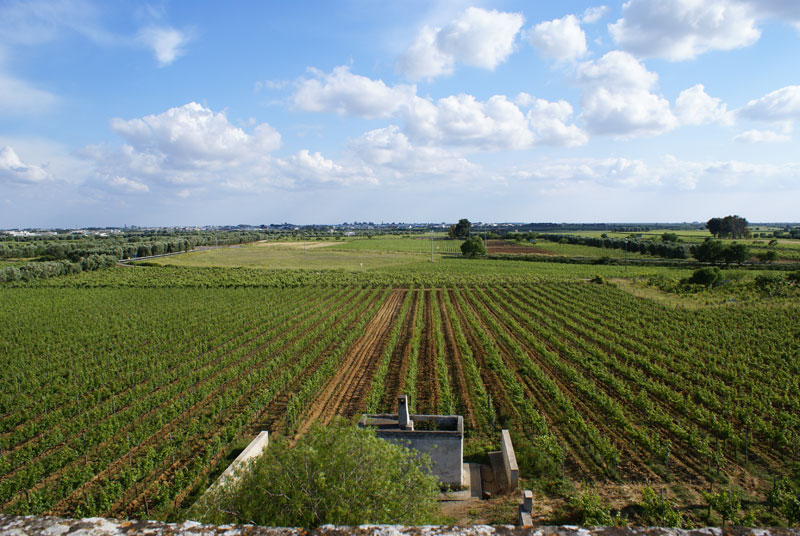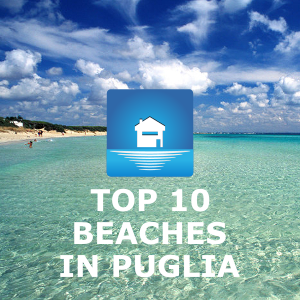
Only one of the many things to do in Puglia? Visiting a winery is a suggestion I strongly recommend if you are passionate about food and wine. Puglia is a land which is rich in wines, especially red and rosé wines. It is, in fact, the homeland, of two grape varieties, which are very important in southern Italy – Negroamaro and Primitivo. In this post I recommend 3 half-day mini-tours to discover an area famous for the production of wine – Salice Salentino DOC, a DOC area where an exceptional wine is produced. This is my home ground so … pay close attention!

Places you’ll visit on the tour
The tour focuses on learning about the production of Salice Salentino DOC, a prestigious DOC from Puglia which includes the towns of Salice Salentino, Guagnano, Veglie and Campi Salentina in the province of Lecce and Cellino San Marco, San Pancrazio Salentino and San Donaci in the province of Brindisi. In total it is home to about 1,200 hectares of vineyards. The community with the most Negroamaro vineyards is my own – Guagnano.
Duration of the tour
You can do it in half a day, it’s best to do it in the morning because it’s not guaranteed that the wineries will always be open in the afternoon. If we assume that the base for the tours is the town of Guagnano and Salice Salentino, then the distances between the main local towns are the following: Lecce (20 km), Porto Cesareo (20 km), Gallipoli (50 km), Otranto (68 km), Pescoluse – Maldives of Salento (90 km), Santa Maria di Leuca (95 km), Brindisi (30 km), Ostuni (60 km). If you are on holiday in this area, you will probably be staying in one of these towns or in the surrounding areas, so take account of the aforementioned distances to make best use of your time and plan the route to follow.

Grape varieties and wines produced in the area
The key wines are reds and rosés with a minimum of 80% Negroamaro to which the Malvasia Nera di Lecce and/or di Brindisi may contribute a maximum of 20% (yield per hectare 120 quintals). There are also whites, generally with a minimum of 70% Chardonnay to which other, non-aromatic, white grapes may contribute a maximum of 30%. Last but not least, there is also a single-variety red, called Aleatico, with a minimum of 85% and with the option of also blending Negroamaro and/or Malvasia nera and/or Primitivo for up to 15%.
Characteristics of the wine Salice Salentino DOC
The red DOC is a full-bodied, dry wine with a ruby red colour, tending to garnet. Its bouquet is fruity, in the mouth it is dry and robust but smooth. It is best served at a temperature of 18°C. and can be enjoyed with meals which are based on meat, in particular with roast pork. You can also enjoy it with starters, for examples with dishes based on pasta and meat sauce. The rosé can, by contrast, be enjoyed with first courses with light sauces or cured meats or even with cheeses. I don’t want to get into details, these are concepts which are better discovered in person, taking a trip around the wineries and asking questions directly to the producers and to the sommeliers you will meet on site.

Itinerary 1: half a day in the land of Negroamaro in Guagnano
Taking Guagnano as a reference point, start with a stop in the wine-making between Guagnano and Villa Baldassarri, home to some of the best wineries within about a kilometer. Azienda Vinicola Cantele and Azienda Agricola Taurino are both on the main road SP365. Cantele is a modern winery, which produces some of my favourite bottles. The first is the Amativo IGT Salento, a blend of Primitivo (60%) and Negroamaro (40%) with grapes from the local traditional farming system, which is called “alberello” (meaning small tree), a bottle which is aged in oak barrels for about 12 months. The second is a Negroamaro IGT Salento, which is also a blend of Primitivo (60%) and Negroamaro (40%), will I like this mix? It is a bottle which is aged in steel tanks before bottling, this practice may seem less romantic than barrels, but I love it because it is believed to be less intrusive towards the wine. Azienda Agricola Taurino, by contrast, is a winery with a long history in Puglia, it was the winery which first launched Negroamaro in the world, thanks to its magnificent bottle Patriglione IGT Salento, a wine based on Negroamaro (90%) and Malvasia (10%), which is produced only in the best years, when there is little rain and the grapes reach maturity both healthy and dry. The wine is aged for over a year in little oak barrels and then for another 5 years in the bottle before being placed on the market. It takes its name from a rural area around Guagnano where I spent a large part of my childhood with my father and grandfather, growing the grapes! Another bottle I would like to suggest is Notarpanaro IGT Salento, the wine is based on Negroamaro (85%) and Malvasia (15%), it is another IGT Salento which is aged in oak barrels for about 6 months. Behind the Taurino winery there is the Azienda Vinicola Leuci, which produces various interesting bottles including the Varale IGT Salento Rosso Negroamaro from grapes cultivated “ad alberello”, this is a bottle based on Negroamaro (90%) and, the point which makes the difference in comparison to the previous bottles, Montepulciano (10%). From this production area in the countryside between Guagnano and Villa Baldassarri, you can head into the real village where you will find two more wineries I would like to suggest. The first is Feudi di Guagnano, a small winery, which produces about 100,000 bottles of wine per year. There is a great variety in the bottles which are produced in this winery, I’ll tell you my favourite straight away, it’s Nero di Velluto Negroamaro IGT Salento, a bottle which is a pure negroamaro with every used grapes which are cultivated “ad alberello”. This is a bottle which is produced in decidedly limited quantities and which is a delight to my palate. On the main street in Guagnano, there is also Cantina Moros, a young and dynamic winery which has recently renovated an old, traditional grape-pressing cellar. Its headquarter is as refined as its wines. In this establishment, they work mainly with their own grapes (Negroamaro and Malvasia Nera), which are cultivated in a little vineyard of 1.3 hectares, situated on the outskirts of the countryside.
Itinerary 2: half day in the land of Negroamaro at Salice Salentino Leaving Guagnano, heading towards Salice Salentino at a distance of about a kilometer. This is the location of one of the oldest wineries in all of Puglia, Leone De Castris. A break here will give you time to visit the Museo del Vino (Museum of Wine) which is found inside this winery and among the different bottles you can taste, there is the first bottle of rosé wine ever bottled in Italy, the super-famous Five Roses Rosé IGT Salento, based on Negroamaro (90%) and Malvasia Nera di Lecce (10%). The first bottle was bottles in 1943 and demostrates how the Salento area is one of the best areas in Italy for creating rosé wines. Leaving the countryside, head in the direction of Avetrana. At the exit from Salice Salentino, you will find the Cantina Cooperativa Salice Salentino, where I am in the habit of taking the cask red wine which I like for its great value for money. It’s a table wine for everyday drinking. For a few years now, the winery has also been offering bottles of wine based on local grapes. Travel through 5 kilometres of countryside in the direction of Avetrana and you will find Castello Monaci in Contrada Monaci, the landscape here is enchanting with hectares of vineyards and olive groves and the splendid setting of Castello Monaci, a banquet hall which is one of the most beautiful and prestigious in Salento. The winery is situated next to its fantastic underground cellar. This is the place which produces local wines made from Primitivo, Negramaro and Malvasia Nera di Lecce, but also international ones. At Castello Monaci you can also pay a visit to the Museo del Vino (Museum of Wine) inside the winery, which tells the story of local wines.
Itinerary 3: half day in the land of Negroamaro between San Donaci and Cellino San Marco
The next stop is San Donaci, home of another of the area’s historic wineries – Azienda Vitivinicola Francesco Candido, founded in the early 20th century. The vines are cultivated throughout the area between San Donaci and Guagnano. Here I would like to recommend a bottle, the Duca d’Aragona IGT Salento Rosso, a blend based on Negroamaro (80%) and Montepulciano (20%). At a lower price range, I love the Cappello di Prete IGT Salento Rosso. As I have mentioned, San Donaci is a part of the heart of the home of Negroamaro, which means that here you can find even more wineries. To discover the true spirit of the local population, the Enotrian social cooperatives are a good place to start and obviously there is one in San Donaci – Cantina San Donaci, over the course of recent years, this has invested a great deal in terms of improving the quality of its production. This is also historic and dates back to the early years of the 20th Century. A range of wines which I suggest you to taste is the Anticaia, out of which you can enjoy the bottle Anticaia Negroamaro Salento IGP. If you want an experience with a taste which is a little bit different, the winery makes a wine out of pure Malvasia Nera, the bottle is called Pietra Caya. Try it and take your own view on my opinion that making wine of this type in purity is a great idea! Cantine Paolo Leo is another fixture which has emerged over the course of the years, the winery is to be found along the street which leads from San Donaci to Tuturano, make a stop there to taste bottles like the Salice Salentino DOC Riserva, the vineyard from which this reserve comes consists of 4 hectares of vines of Negroamaro e Malvasia Nera di Lecce, all of which are cultivated according to the traditional “alberello” method. From San Donaci we head towards Cellino San Marco, another focal point in the production of Negroamaro in Salento. This is the place to find another winery to visit: Tenute Al Bano Carrisi, which sounds like the name of one of the world’s most famous Italian singers. The winery is located in the agricultural area of Curti Petrizzi, a visit here is an experience with the artistic genius of Albano. In addition to the winery, Tenute Al Bano Carrisi is a place of amusement parks, gardens, water-parks, picnic areas, restaurants and places to sleep. In the countryside, by contrast, you will find the Due Palme Winery, which is one of the most important cooperatives in the area with about 1,200 members and 2,400 hectares of grapes. They produce an extensive range of labels and I suggest that, if you want to go straight to the point, try the Selvarossa Salice Salentino Riserva DOP based on Negroamaro (85%) and Malvasia Nera (15%), a wine of about 14,5% which makes an excellent partner for robust starters, grilled, venison, lamb, fermented and aged cheeses. Just outside Cellino San Marco, further along the street which leeds to Campi Salentina, make a stop at Masseria Li Veli. The building was built on top of an old farm house, which dates to the late Middle Ages, the winery in its modern form dates to the early 20th Century. It is a rural area which is very beautify and which produces a wide range of bottles of wine including Passamante Salice Salentino DOC, which is aged for six months in French oak barrels, it is a pure negroamaro.
Now, you have some ideas to start your wine tour in Salento, Puglia. If you need more information, just ask to me, I will be happy to help you in finding your right wine sip!
The beautiful picture at the beginning of this post is of my friend Giuseppe, you can follow his works clicking here, thank you.












Fabio,
Now I know what to do when we return to Puglia and Torre Lapillo. This wine tour sounds fantastic. Just one more reason to return……..
Grazie e a presto
Ciao
Niclas
Niclas! I will suggest more things to do and visit inland in this blog. If you like food and wine for sure you will like also one of thi 3 half day wine tours. A presto, Fabio.